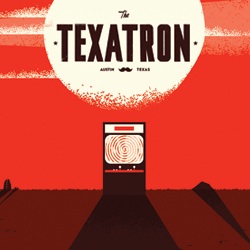RAGDOLL METAPHYSICS: INTROVERSION ON MATHEMATICAL CITIES, GAMING THE PIRATES & THE REDEMPTION OF PROGRAMMER ART
Time for another fireside chat with a developer. This time it’s a programmer named Chris Delay, the man who is the algorithmic heart of independent developer/publisher Introversion. These British independents are just a couple of years younger than me, and they started out when I started out as a journalist. As a result I’ve followed their progress quite closely.
They’ve gone from making a quietly clever hacking game through to talking about procedural generation of urban landscapes as the key theme to their latest, unrevealed game, Subversion. What follows is a perspective that is neither that of a fundamentally “indie” team like 2D Boy, nor that of a mainstream developer. Introversion have, somehow, cut their own path. It’s a fascinating story that promises to get even more interesting in the years to come.
Not everyone is lucky enough to be familiar with the world of Introversion “Last Of The Bedroom Programmers” Software, so let’s look back at what you’ve been doing over the past eight years. Chris, what have you been doing?
Chris Delay: Well, we’re quite a small developer, and we started out in 2001 with a hacking game called Uplink. That was basically a game I made while I was at university. We launched that from our website, and got it into high-streets in the UK. That did quite well, really, and then we spent about three years making our second game, Darwinia. That was a strange game, which won awards and got good reviews, but it took so long to make that we had to troll along for nine months with zero income. Eventually, finally, we got the game out on Steam, and it was the Steam deal which finally brought us a little big of financial security. Darwinia hadn’t sold well on launch, so having the Steam guys put it on their system got us a comparatively huge number of sales.
I’m still processing that bit about retail in the UK. You got your indie game about hacking on shelves in the UK?
CD: Yeah, it was a pretty major coup for us. It was about 2002, and so the game had been sale on our website. None of us knew anything about how this stuff worked. Mark and Tom went into HMV on the highstreet and asked a guy behind the counter how to get a game on their shelves. This guy said they had to speak to the manager, and he told them to speak to a distributor. We ended up speaking to Pinnacle Software and made a deal to have the units distributed to shops. We produced all the units, so we were acting as publisher and developer. It gave us a huge amount of confidence, we felt we could genuinely operate as an indie publisher and developer. It was a different market then, however.
I guess that kind of leg up gave you the confidence to sink three years and your livelihoods into Darwinia, a game that seemed to confuse people about genre definitions.
CD: Darwinia reviewed very well, and we won the IGF with it in 2006 – there really was a lot of interest in it – but there wasn’t really a buzz amongst gamers, just among journalists. It was like a “journalist hit”, and that felt strange because we’d really poured ourselves into it. The reasons for that came from a number of factors – Darwinia came out with a really bad demo. We look back and just can’t believe the mistakes we made: there’s no tutorial. We did a new demo ready for the Steam launch, and so the Steam launch was much better, much more targeted to the right kind of gamers, with a demo that sold the game.
Demos sell games! Yes. They really, really do. Anyway, then came Defcon, a game of nuclear war. You turned that around pretty quickly.
CD: Yeah, it was about twelve months. I’d originally made a game in about 24 hours and failed dismally, but I ended up making the prototype for a multiplayer strategic combat game in about a week. This was back when we were making Darwinia, producing the prototype. We called it Wargames, for obvious reasons – it’s based on the final scene from that movie. We knew early on it would be the game we did next, and over twelve months we had to write all the back end stuff such as the server lobbies and so on.
That back end stuff you might not think about is really non-trivial, especially if you’ve not done it before. Three or four months were more about just testing, though, so the final game came around very quickly. And Defcon is our most popular game, having been launched on the website, on Steam, and on the UK high street all the same time. We even did a U.S. publishing deal later on, which was good too.
And Defcon had a neat method for making money out of pirates included in it, right?
CD: The idea was that Defcon was a multiplayer game that needed a constant supply of players online if it was going to work. We were worried that without enough players it wouldn’t gain enough momentum, and that it would jump right into a downward spiral. We figured that genuine players would still have a better time if they were playing against pirates, than playing against nobody. So we produced a pirate version of the game and released it into the world.
With Darwinia we released a torrent version that purported to be the full game, but was just two levels and a message telling the pirate they had ripped off a little indie developer. We’ll never know how successful that was, but a huge number of people got that version. With Defcon we put the full game out with a specific authentication key, so we could track the use of it. It was all switched on and you could play the pirated game with that key, but at any time we could flip the switch and turn that version of the game off, with a message saying that you needed to pay for the game. That brought in new purchases. The idea behind what we call the “Purity Control” plan is to accept that there’s going to be a pirate version on day one and take advantage of that. We’ve done that.
How prolific are you? Was Defcon one of many prototypes?
CD: We’re not prolific. We always have a couple of games that are a good idea, but that we keep on the back burner. Then we have a big idea, like we had for our new game Subversion, and make lots of prototypes in that area. We wanted to explore and see what worked, to push that idea to be as good as it can be.
That said, as we have expanded, we’ve encouraged our staff to spend time working on their own ideas. We’re perfectly happy for the people who work at Introversion to work on game ideas in their own time because both Uplink and Defcon were side-projects: a good game idea doesn’t arrive in the time you’ve set aside for working. It arrives when you’re very busy, and you have to know how to use that. Our programmers are now using our technology to get ahead with their own ideas, getting somewhere fast because so much of the framework is there already.
Sounds a little like how Google work. I think Gmail was a side project that they slowly worked into the mainstream, wasn’t it? I wonder whether more developers would get better ideas if they fostered that kind of culture: go use our tech, make stuff! Perhaps a big developer could do away with a lead designer and just have their creative stuff make prototypes, one of which becomes the next project.
Let’s talk Darwinia for a moment. What were the lessons of that? You’ve talked before about the idea of creating a game with absolutely minimal art assets?
CD: I think the lesson was that we’re not a traditional developer. We’re not going to try and land deals that will take us up to a fifty-plus teamsize or whatever. Because we’re small in size we don’t have any of those kinds of assets – we don’t have any art staff. Everything we do is affected by that. We’re always looking for a way to do things that don’t require art design time. Making content takes forever – look at the nine levels in Darwinia, they took forever. Then there was playing and testing, to make them right. So we end up making games that are different, games that are identifiably – I think – Introversion games, because they are so heavily programmer driven.
That’s an art approach all on its own though, isn’t it? You’re making programmer art an art style. You’re vindicating that. Artists don’t have to be there to make games look good.
CD: There’s definitely a look and style to our videogames. I love sharp, vectorised lines, and work towards that. Look at the Darwinians, they’re a classic piece of programmer art that got promoted into the lead character of the game. They’re now our company logo too – what kind of logo summarised our design philosophy? We got into all kinds of discussions about that. But ultimately we’re not going to make another shape that is as iconic as the Darwinians. They’re an example of programmer art going mad and taking over.
That seems to continue in what we’ve seen of your new game, Subversion. The idea there is procedural generation, isn’t it? Mathematics to create the totality of the game world?
CD: Well Subversion if the culmination of all those lessons about content that we learned in the earlier games. Subversion is quite an epic game, but Defcon and Darwinia are known in scale, you immediately grasp it. Here we’re doing something else… procedural generation is really useful – we used it in the level creation of Darwinia, where we had high level plans of “oh, we want mountains there” but the details came out of the landscape system. We didn’t plan every nook and cranny, it was completely randomised. We were planning for a mix of good luck and experimentation. With Subversion we’re going to go the whole way with that, and use procedural generation to make the entire city.
How do you go about mathematically generating a city?
CD: There had been some academic research done by two guys called Parish and Müller, who had published a paper on procedural road generation. It had this idea that road networks grow over time. They start from a single market road and grow outward. They grow into networks in a bounded way. We used a similar system in the trees in Darwinia, the grow up into various branches over time, and roads use a similar method. So I did some research and looked around this subject, and found all these different techniques that already existed but hadn’t been used in a commercial application. I started out with road layouts, and then began to modify the parameters. Sometimes you’ll get lovely radial, spiral patterns, or you can tell it to create a really rigid Manhattan-style grid.
You feed these parameters in and it creates the road network which is the foundation of your city. Every subsequent layer builds on the previous layer, so the very next layer looks for the spaces between layers, and makes judgments about “is this likely to be a skyscraper, or to be a house?” Then you zoom in, and carry on. You do another procedural generation process for each layer of detail. Filling in that world.
When we first talked about this it was at GDC last year, when you told me to seek out Eskil Steenberg. We did meet, and I was glad about that. He’s using similar techniques to astonishing effect.
CD: He’s a raving genius, isn’t he?
He is. How did you meet him?
CD: Actually it was down to our marketing person, Vicky. She arranged to meet Eskil at GDC, and he took the whole company out for dinner. He started talking, opened his laptop, and started showing us some of the craziest demos I have ever seen. Some of it was a game, sometimes it was an editor, sometimes it was tools… and sometimes you couldn’t tell. He’s creating really good looking stuff, he’s got a real eye for it.
And he’s a hardcore graphics programmer, so you would tend to find that what he’d create was really rich, using shader tech, the kind of stuff that’s usually used to create photorealism. He’s subverting that, pushing pixels to where they shouldn’t be, to create an almost painterly look. It’s not precise, which makes it look unique. Since we met him we’ve seen a lot more of his games, and some of the stuff he’s been able to do is amazing. He’s using the same kind of techniques as us, but in a world that is very beautiful. It’s not been created by an artist, however, just by a series of rules. And he’s gone further, and allowed players to modify the world from inside it.
We’ve exchanged some emails and I know he’s used a lot of tricks in dynamic adjustment of graphics, and it most modern videogames graphics tend to be very static – scenery is static because that’s the only way to render the stuff fast.. Eskil’s work and Subversion both turn that around because they adjust the information from the 3D card dynamically. In Eskil’s case it when players move bits of the world around, and in the case of Subversion is the appearance of more and more detail. You go into a building and floors appears, then stairwells and elevators, and we’re chucking all that data onto the graphics card dynamically.
Yes, both you and Eskil seem to have grasped that computers can render abstract and make it beautiful. Tron as art: it doesn’t need to be a hi-res texture to be impressive. In fact abstract games seem more honest somehow, about what games are. Games that quest for realism seem to be lying to themselves, or to us. Why head towards reality? It’s a game, head away from it! Games that are honest about their abstract nature seem to have a payoff. Could the pursuit of realism be a bad thing?
CD: No, it’s not a bad thing. It doesn’t interest me personally. I’ve no interest in exploring it. That said, I love top end first person shooters. I really enjoy playing them, but when you look at the way they’re constructed – block by block – and the cost of that, it’s not all that exciting. The change in quality between one top end first person shooter and the next is sufficiently small that it barely seems to matter. Killzone 2 might be the best shooter you’ve ever seen, but it only looks slightly better than Call of Duty 4, say. That must be quite demoralising for its creators.
Do you take any inspiration from that sort of AAA stuff then?
CD: I can’t stop playing Left 4 Dead. It’s got something of Counter-Strike, which I used to play a lot, about it. It’s in that school of very precise multiplayer action. Also, it’s a simple multiplayer idea, but the co-operative nature means you can let go in away that you can’t playing Counter-Strike.
And, more importantly, Valve are such masters of teaching you to play the game without you even realising it. Listen to the commentary for the game and you find out some very interesting stuff about their levels. I think they call them lessons: a single fact that a player needs to understand to play the game. They’re analysing which ones of these you’ve demonstrated as you’re playing. If you’ve never demonstrated that you know you can pick up a second pistol, for example, they put a lot of help on screen, showing you where to pick the pistol up from. The characters will even say “grab the pistol from the car”. There’s no tutorial, you just jump in and play. You can learn as you play.
Absolutely, the lessons that Splash Damage always talk about in the wake of Quake Wars (I interviewed Quake Wars designer Ed Stern last month) was accessibility: people need to know what to do, what to shoot, and why they got killed. Valve’s stuff realises that, but somehow doesn’t make it explicit to the player. The lessons are in play.
I remember the bit right at the start of Half-Life 2 when a guard makes you put something in a trash-can. As I wrote my review I thought “Wow, they encapsulated their entire game in that lesson – you can move stuff around! That’s Half-Life 2‘s entire forward step.” They taught you about Half-Life 2 in split-second encounter.
CD: It’s so, so important. We had to learn that. We took an early build of Defcon to Valve and showed the guys there, and it was working, but it wasn’t really ready to play, and we couldn’t see that, being too close to it. Valve sat us on a couch at the back of a room, and dragged one of their art guys in to play the game totally cold. We’re sat there watching, and couldn’t say anything. He was playing, and not getting anywhere, the CPU is wiping him out and he doesn’t even know why he’s losing. We had to sit there and avoid bursting into tears. Valve do this stuff from very early on in a project, to make these tests all the time, take notes, make it accessible from the start.
Did that lesson show up in the development of Multiwinia?
CD: Yes, Multiwinia was the first game where we ran our own usability labs. We went through several iterations of the controls and the head up display. And we still didn’t get it quite right. I’m happy with the head up controls and the display, but very near the end when we were demonstrating it to PC Gamer and the response we got regarding the controls was less than favourable. Fortunately they didn’t keep quiet about it, and we went away and had a think, and then fixed it. There were some real oddities in there which we had to address. I think we made the game a lot better because of that.
Games journalists not useless shocker!
CD: We’ll never underestimate the value of getting people to play your game for the first time, and have a good experience.
How do you feel about how Multiwinia was received?
CD: It was reviewed fairly, I think. It didn’t sell hugely well, and it was quite disappointing. There seemed to be a general lack of interest across the board, really, from players and from journalists. It was everything we could do just to get journalists to play the game. With Defcon we were lucky: we sent builds around, and people played it and wrote about it. We assumed that was the norm, but it’s not. Journalists don’t have to review your game, or do anything at all.
Your community must have helped?
CD: The hardcore fans played it, but they shared the apathy. They all played Multiwinia, but they generally preferred Darwinia, or Defcon. And we felt rather like “at least that was the reaction from all quarters.” The response to Multiwinia was very similar no matter who you talk to.
I suppose the stance we have to take on that is that our games are all very different, and they’ve been different to make, each time. When you’re not just iterating the same thing, you’re going to occasionally release something that isn’t a hit. The more you release, the more you risk something not being a success. What matters, I guess, is that it isn’t your final game. You need to have contingencies. I want to turn the Multiwinia question around on you: why do you think there was such a lack of interest?
I think it’s just that it landed somewhere wrong in the Venn diagram of gaming tastes. It’s like: there’s not many people who are in the “love retro Tron vector graphics indie games” circle, who are also in the “loves multiplayer RTS” circle. Plus, it was September in one of the busiest years of gaming in memory.
CD: That’s what Tom thinks: we took Darwinia and made a game that wasn’t hardcore nor casual. It had Darwinia‘s looks, but that didn’t mesh for people with the multiplayer component.
Success in RTS multiplayer does seem pretty binary. You’ve either got tens of thousands of people online at any one time, or five people. The Starcraft crowds are probably the only people who can sell large numbers of multiplayer RTS games.
CD: We’re going to release a package of Darwinia and Multiwinia together on XBLA, so I hope that can pick up some more fans. The combination of single and multiplayer might work in our favour. And that’s due later this year.
So, when are we going to see something more solid of Subversion?
CD: I can’t say. But I’m writing about it on our blog. I’m working on a single playable version that is playable from start to finish. I’m about half way through that task. We’ll talk about it when that’s ready.
[Jim Rossignol is an editor at RockPaperShotgun.com and the author of This Gaming Life, an account of the life of modern videogames and some of the people who play them. Ragdoll Metaphysics is his Offworld column exploring and analyzing gaming’s vast world of esoterica.]
Previously:
Ragdoll Metaphysics: Why Real Time Strategy Is The Genre Of The Year
Ragdoll Metaphysics: Quake Wars designer Ed Stern on Blind Luck …
Ragdoll Metaphysics: Good Grief, The Victory Of Eve's Space Goons …
Ragdoll Metaphysics: Memories of 2003, or Why We Need Planetside …
Ragdoll Metaphysics: Soap Opera & The Sims – Offworld
Ragdoll Metaphysics: 2008 And The Indie Renaissance – Offworld
Ragdoll Metaphysics: Ten Things That Made Me Glad To Be A Gamer In …
Ragdoll Metaphysics: Left 4 Dead, The Thinking Man’s Braindead Shooter – Offworld
See more posts about: Introversion, Offworld Originals, Ragdoll Metaphysics






